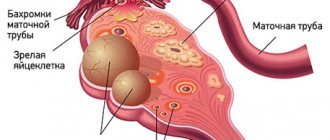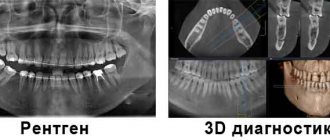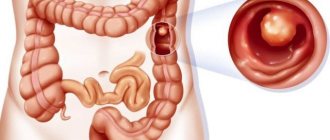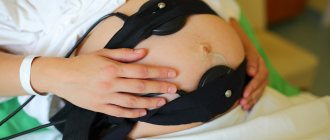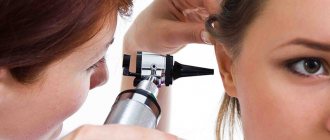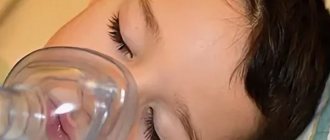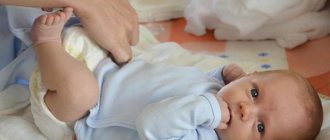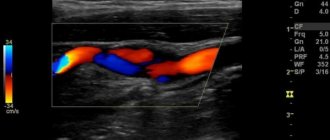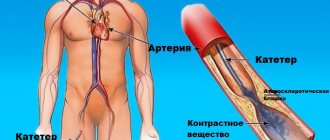For children and adults. At the first suspicion of hearing problems and on an ongoing basis for people who have been seeing an audiologist for a long time. Before installing or replacing a hearing aid or cochlear implantation. Fast, simple, painless. If there is something you didn’t already know about audiometry, let’s fill in the gaps with this article.
Let's watch and listen
What is TPA?
Pure Tone Threshold Audiometry (TPA) is a hearing test method. This study is carried out by a doctor using a special algorithm: hearing thresholds are determined at a given set of frequencies. A significant advantage of TPA is the alternate diagnosis of the right and left ears, which allows making a separate conclusion for each ear. TPA can be performed on children over six years of age. This is an absolutely safe, accurate and relatively inexpensive way to determine various types of hearing loss. Tone threshold audiometry is a purely diagnostic method. If your child is recommended to undergo THA, do not panic: this does not mean that the child needs a hearing aid or that the hearing loss is irreversible. There are many conservative (mostly physiotherapeutic) methods of hearing correction, including plasmapheresis, electrical stimulation and laser therapy.
Dozens of reasons, one study
Causes of hearing loss may include:
- congenital pathologies;
- consequences of past illnesses and injuries;
- decreased acuity of perception with age or after working in noisy industries.
Some are immediately noticeable, especially to others, some are not detected for years, and sometimes a person immediately begins to feel as if the volume around them has been lowered.
Often only certain sounds are not perceived, for example ringing or hissing tones, some words seem illegible. This situation is especially insidious in children who do not yet know how they should ideally hear and develop in a disturbed auditory environment (read about the importance of early diagnosis here).
Sometimes you can begin to suspect something when you perceive your voice to yourself as somehow strange. In general, there can be many problematic situations. An audiologist can determine what exactly the violation is compared to the norm in each specific case. But not by eye, as they say, but with the help of special equipment. Otherwise, this is fortune telling on coffee grounds, not diagnostics.
Once upon a time, doctors did not have precise instruments at their disposal, and all research was carried out only with the help of live speech. That is, the doctor spoke words and sounds to the patient, trying to do it in different tones, omitting individual hissing or whistling sounds, some loudly, others in a whisper, and the person caught them as best he could, and said whether he could hear them or not, and tried to repeat them. The accuracy, of course, is far from 100%.
Today the devices used are audiometers connected to a computer. And the study - audiometry - is a comfortable, safe and verified process.
In what cases is pure tone threshold audiometry performed?
FNA can only be recommended as a diagnostic method by a qualified otolaryngologist (ENT) or audiologist. It is possible that another audiometry method is better suited in your case - for example, speech audiometry, game audiometry, which is often used to diagnose hearing in children, computer audiometry or audiometry in an extended frequency range. Therefore, first of all, you should rely on the opinion of your attending physician. It is necessary to contact an otolaryngologist (and then, possibly, an audiologist) if any of the following symptoms occur: - hearing loss - tinnitus - dizziness - unintelligible speech
Classification of the degree of hearing loss
| Degree | Average hearing loss according to the classification used in Russia/according to the international classification | Perception of spoken and loud speech | Perception of whispered speech |
| 1 | 20-40 dB / 26-40 dB | 6-3 m | 2m - at the ear |
| P | 40-60 dB / 41-55 dB | 3 m – at the ear | 0 – at the ear |
| Sh | 60-80 dB / 56-70 dB | Loud speech near the ear | 0 |
| 1V | 80-100 dB / 71-90 dB | Scream by the ear | 0 |
| Deafness | >100 dB / >91 dB | 0 | 0 |
According to the classification used in Russia, average hearing loss is defined in the range of 500-4000 Hz, and according to the International classification it is set in the range of 500-2000 Hz.
Determining the type of hearing loss using TPA
When a patient has hearing loss, it is important to understand what we are dealing with. There are two types of sound conduction: air and bone. When we hear something, sound waves travel from the sound source to the outer ear through the air. At the same time, the eardrum vibrates, and these vibrations are transmitted to the bones of the middle ear and then to the inner ear. This is air conduction. If the sound source comes into direct contact with the head, the sound waves cause vibration of the skull bones. Thanks to this, the waves are transmitted directly to the inner ear. This phenomenon is called bone conduction. If your hearing has deteriorated, it is important to figure out where the sound transmission is failing. If air conduction is impaired, but bone conduction is preserved, a diagnosis of conductive hearing loss will most likely be made, which means a malfunction of the outer or middle ear. If the functioning of the inner ear is impaired, it is sensorineural hearing loss (sometimes called sensorineural hearing loss). Mixed options are also possible. Tone threshold audiometry allows you to separately study both types of conductivity: air conduction - using a telephone through which the audiometer transmits sound to the patient (usually intra-ear, because it provides better isolation from external noise), and bone conduction - using a bone vibrator attached to the patient's head, behind the ear. Thanks to this, it is possible to determine exactly where the disorder is present - in the outer, middle or inner ear, and conduct additional studies of the necessary area. The degree of hearing loss is also determined using a TPA.
What to do after undergoing an audiogram
It is worth noting that if your hearing deteriorates, you should immediately seek help from a specialist. Timely initiation of treatment will help avoid complications and severe consequences of the disease. We recommend doing a routine inspection. Complications can be symptoms of other equally dangerous diseases. If the study nevertheless shows the presence of a hearing impairment, after it, as a rule, other studies in this area are prescribed. If necessary, doctors from related fields are involved. Upon completion of the examination and diagnosis, the patient begins hearing loss prevention, treatment (therapeutic, medicinal or surgical), and a hearing aid is selected in accordance with the hearing loss.
Return to list
How is pure tone threshold audiometry performed?
To carry out TPA, a special device is used – an audiometer. Previously, musical tuning forks were used for a similar hearing study, which is why such a study was called tuning fork. But the audiometer is much more accurate: it is capable of generating sound signals at specified frequencies. Typically, hearing is tested at frequencies ranging from 125 to 8,000 Hz. At each frequency, the patient is presented with a sound of different intensity, that is, less loud and louder. The patient is in a separate soundproofed room (in principle, it is possible without it; then the results must be adjusted for the inevitable noise surrounding the patient). If the patient hears a sound, he must press the button. The result of TPA is a special document - an audiogram. Based on this, the doctor will make a diagnosis and suggest rehabilitation methods.
Decibels and Hertz, what are they?
A person's hearing range includes the volume and pitch levels of sounds that a person can hear without feeling discomfort.
Humans are surrounded by a variety of sounds, from the subtle rustling of leaves to louder sounds such as music, screaming and industrial noise. A person's hearing range includes pitch (high or low) and volume. Pitch is measured in hertz (Hz), loudness is measured in decibels (dB).
For a healthy person with normal hearing, the range of auditory perception begins at low frequencies, around 20 Hz. At the opposite end of the range is the highest frequency of 20,000, which does not cause discomfort. The human hearing organ, despite its fairly wide frequency range, is more susceptible to frequencies from 2000 to 5000 Hz. As for loudness, a person hears starting at a level of 0 dB SPL. Sounds above 85 dB SPL can be harmful to your hearing if you are exposed to them for long periods of time. Surprisingly, some animals, particularly dogs, have a much wider hearing range than humans.
Contraindications for TPA
TPA is not performed on children under six years of age because the results may be unreliable: children under six years of age may find it difficult to understand and correctly perform the test according to the instructions. For the same reason, a contraindication to TPA is a lag in intellectual development.
Tone threshold audiometry. Audiogram - 1360 rub.
The procedure is carried out by ENT doctors from the Zhulebino clinic (77 Privolnaya St.)
How to reduce the cost?
MAKE AN APPOINTMENT PRICES
Audiometry: pros and cons of the procedure
The survey has a whole range of advantages. Among them:
- high accuracy of diagnosis of hearing impairment;
- the ability to conduct a complete analysis of pathologies;
- receiving test results in an audiogram;
- absolute safety for the patient, no contraindications.
But, unfortunately, threshold audiometry also has its drawbacks. Thus, the graph does not always display completely reliable information, since some patients may feign illness. In addition, testing can only be carried out in a room completely isolated from extraneous noise. Therefore, a separate room must be equipped for pure-tone audiometry.
Despite some disadvantages of the procedure, it is currently considered the most effective way to assess hearing.
Where to do the research
If you need audiometry in Moscow, contact the Doctor Nearby medical clinic. Our equipment, which meets the latest requirements of technological progress, will allow for accurate diagnosis of hearing impairment.
Our qualified specialists skillfully master the technique of reading audiograms and can easily make the correct diagnosis. The vast practical experience of doctors allows us to identify hearing diseases in the early stages of development. This, in turn, makes it possible to immediately begin treatment and eliminate the pathology at its inception.
In their work, doctors at the Doctor Nearby clinic are guided by the latest advances in science. Timely contacting us for medical help will prevent the progression of hearing loss, and in some cases will allow you to completely restore your hearing.
To pre-book a consultation with an otolaryngologist or audiologist, undergo a test, and also find out other questions that interest you, just call the phone number listed on the website. Our centers are located in various districts of Moscow, we will recommend the nearest clinic. “Doctor Nearby” cares about the health and comfort of its patients, therefore it provides services at the highest level and at reasonable prices.
Speech audiometry
The purpose of this test is to obtain a graph of speech intelligibility in the patient's native language. A person’s speech is recorded in high quality and broadcast into headphones at different volumes and frequencies. It is important that the groups of words in one recording are phonetically homogeneous, pronounced at the same volume and correspond to the rhythmic-dynamic structure of the patient’s native language. On average, one entry contains 50 words. The strength of sound transmission is controlled by an attenuator.
The speech testing algorithm includes three stages, which are displayed on the graph as control points. At the first stage, the point of sound intensity is obtained at which the patient hears sounds without understanding them.
The second point is information about the intensity of speech, at which the patient distinguishes approximately half of all words. The third point determines at what intensity of speech a person can distinguish it completely (90-100% of words).
How to prepare for the procedure
Before starting to study the patient’s hearing acuity, the audiologist conducts a preparatory conversation and survey with him. The doctor finds out when the hearing problems began, whether they affect one or both ears, and whether the patient has ringing, pain or discomfort in the ears. The audiologist will also ask whether the patient has had any infectious diseases or ear injuries, what is the noise level in the patient’s workplace, and whether other members of his family have hearing problems.
The examination includes visual examination of the outer ear for visible deformities, as well as examination of the ear canal and eardrum using an otoscope.
No special preparation measures are required before audiometry; however, if possible, it is better to avoid being in noisy places (discotheques, concerts, runways) before it is carried out, and also not to listen to music on headphones.
Pediatric audiometry
The second name for testing is gaming audiometry. This method is used to diagnose children who have difficulty sitting in one place and following doctor's instructions. The test is based on the development of a conditioned reflex in the child, based on basic movements. During the text, the audiologist stimulates the manifestation of these reflexes using simple actions: lighting a light bulb, pressing a button, rearranging small objects, etc. The child should do this the moment he hears a certain sound. The process is similar to threshold audiometry, when listening begins with the minimum intensity and ends with the maximum necessary.
Attention!
This article is posted for informational purposes only and under no circumstances constitutes scientific material or medical advice and should not serve as a substitute for an in-person consultation with a professional physician.
For diagnostics, diagnosis and treatment, contact qualified doctors! Number of reads: 5420 Date of publication: November 24, 2017
Otolaryngologists - search service and appointment with otolaryngologists in Moscow
Computer audiometry
This technique is the most effective and accurate. Most often it is used to determine hearing acuity in young children, including newborns. Recording of results does not require any participation from the patient and is carried out during sleep. In adults, this method is also applicable, but they are tested while awake.
Compact electrodes connected to the device are attached to the patient’s head. The test sounds are clicks. When they are perceived or not perceived by hearing, electrodes record the resulting reactions and reflexes. This data is processed in a computer program, displayed on a monitor and printed in the form of a graph with five peak points, similar to the structure of the auditory canal. All impulses are recorded along its entire length. Unlike other types of audiometry, with this method data is recorded simultaneously from both ears.
This audiometry method allows you to identify:
- Hearing loss;
- Multiple sclerosis;
- Brain stem abnormalities (heart attacks, neoplasms, inflammation, etc.);
- Acoustic neuroma.

